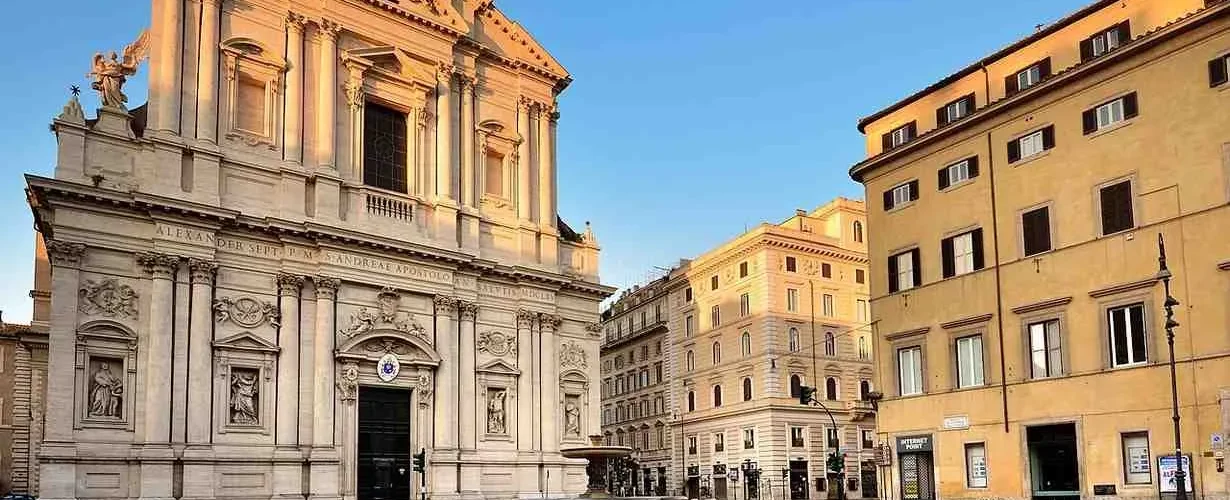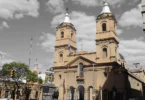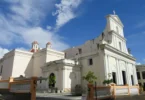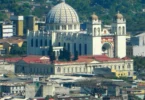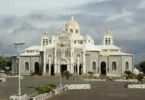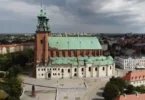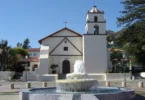Introduction
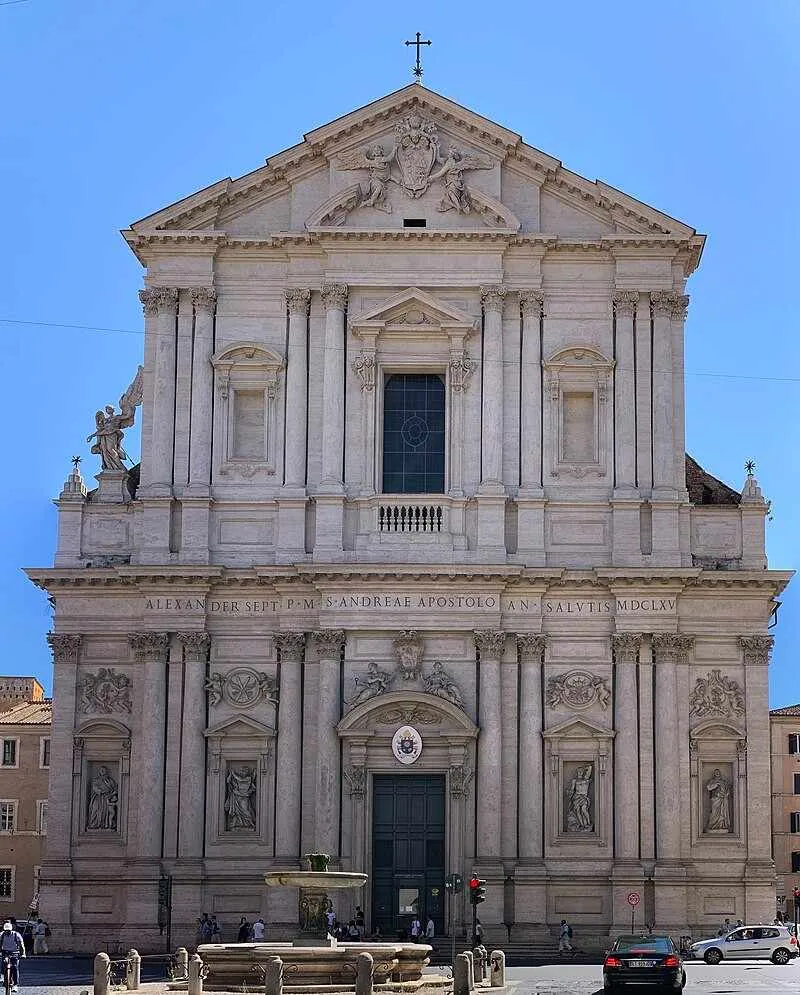
The Basilica of Sant’Andrea della Valle is a Catholic place of worship located in the historic center of Rome, specifically in Piazza Vidoni, within the Sant’Eustachio district. It stands at the intersection of Corso Vittorio Emanuele and Corso Rinascimento, facing the façade towards the former. This magnificent basilica is the seat of the general curia of the Theatines and falls within the territory of the parish of Santi Biagio e Carlo ai Catinari. Governed by the Theatine Clerics Regular, it holds the esteemed status of a minor basilica and serves as the seat of the cardinal title of Sant’Andrea della Valle.
Built during the Counter-Reformation, Sant’Andrea della Valle is one of the great 17th-century preaching churches in Rome, alongside other masterpieces like San Carlo ai Catinari (Barnabites), The Gesù and Sant’Ignazio (Jesuits), and Chiesa Nuova (Oratorians). This architectural gem reflects the grandeur and spiritual ambition of the era, serving both as a center of worship and a testament to the artistic and religious fervor of its time.
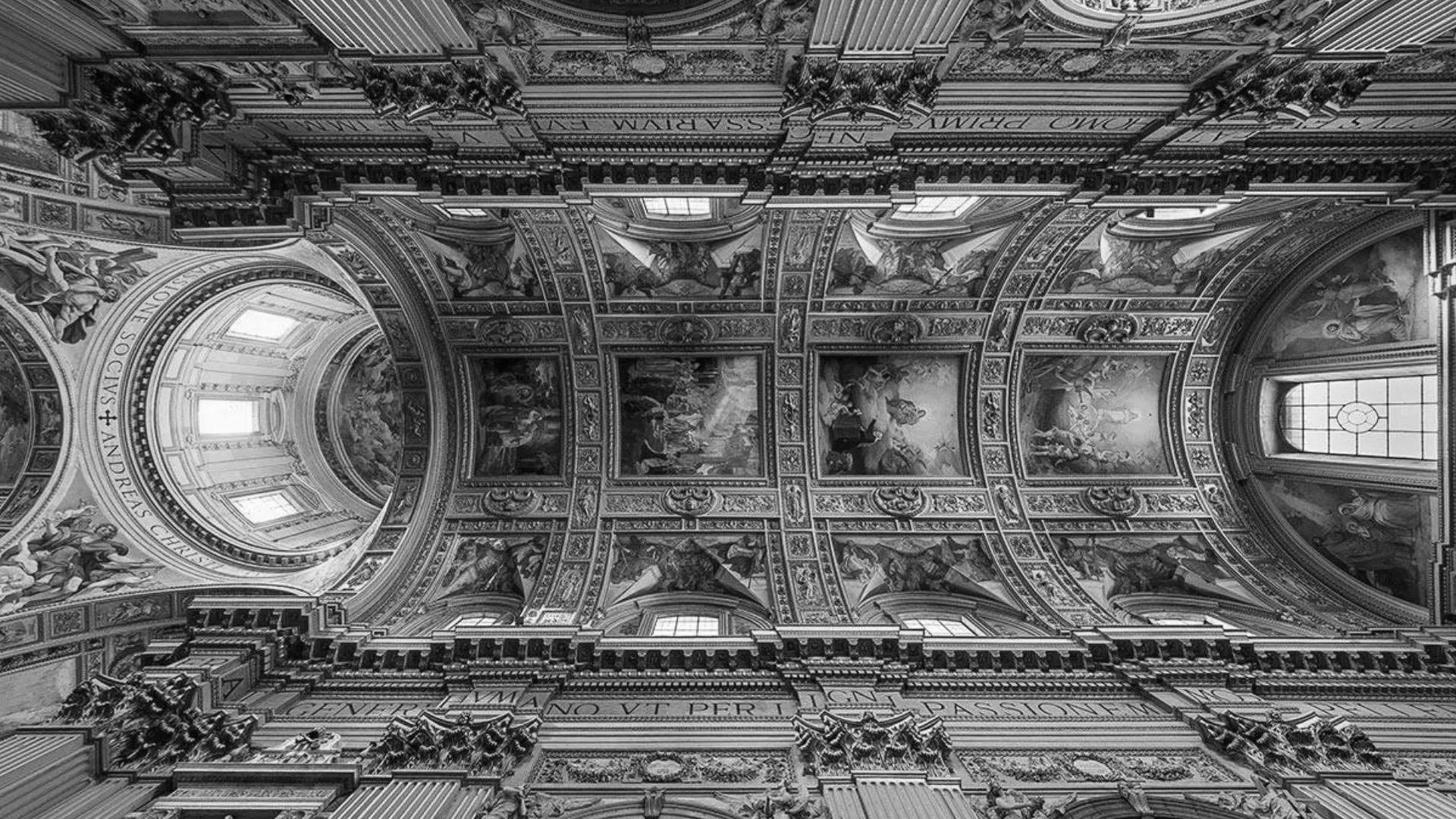
The Basilica of Sant’Andrea della Valle was designed and constructed between 1590 and 1650 by renowned architects Giacomo Della Porta, Francesco Grimaldi, and Carlo Maderno. It was built on the site of a small, earlier church dedicated to San Sebastiano de Via Papa, which was historically significant as the location of the first burial of the martyr Saint Sebastian. This site also held the palace of the Piccolomini Dukes of Amalfi and the Counts of Celano, whose noble lineage influenced the square’s name, Piazza di Siena, a title that reflects its historical ties to the city of Siena during the 16th century.
The construction of the basilica was generously financed by Cardinal Alessandro Peretti di Montalto, the nephew of Pope Sixtus V, whose papacy had a profound influence on the architectural development of Rome. The church’s name, Sant’Andrea della Valle, was inspired by the nearby Palazzo Della Valle, further anchoring the church’s connection to the prominent Roman elite of the time.
In 1608, the renowned architect Carlo Maderno was commissioned to complete the basilica’s construction. His work included the enlargement of the transept and the raising of the dome, which added to the grandeur and structural integrity of the church. Later, between 1655 and 1663, the church’s iconic Baroque façade was added by Carlo Rainaldi, contributing to its dramatic and ornate appearance that reflects the artistic exuberance of the Baroque period.
The basilica has also been the site of numerous significant historical events. In the early 19th century, Pope Pius VII presided over the funeral of Henry Benedict Stuart, the fourth and final Jacobite claimant to the British throne. The mass was solemnly sung by Cardinal Pietro Francesco Galleffi, marking the basilica as a witness to the political and religious history of Europe.
Another notable moment in its history occurred on April 28, 1918, when the Conventual Franciscan friar Maximilian Maria Kolbe, who would later be canonized as a martyr and saint, was ordained a priest in this sacred space. His ordination in such a historically rich environment adds to the spiritual legacy of the basilica.
In more recent history, the basilica received two important ecclesiastical honors. On March 12, 1960, Pope John XXIII established the cardinal title of Sant’Andrea della Valle through the apostolic constitution Quandoquidem, officially recognizing the basilica’s importance within the Catholic Church’s hierarchy. Then, in December 1965, Pope Paul VI elevated the church to the dignity of a minor basilica, an honor that acknowledged its historical, architectural, and spiritual significance within the Catholic world.
Architecture of Basilica of St. Andrew della Valle, Roma, Italy
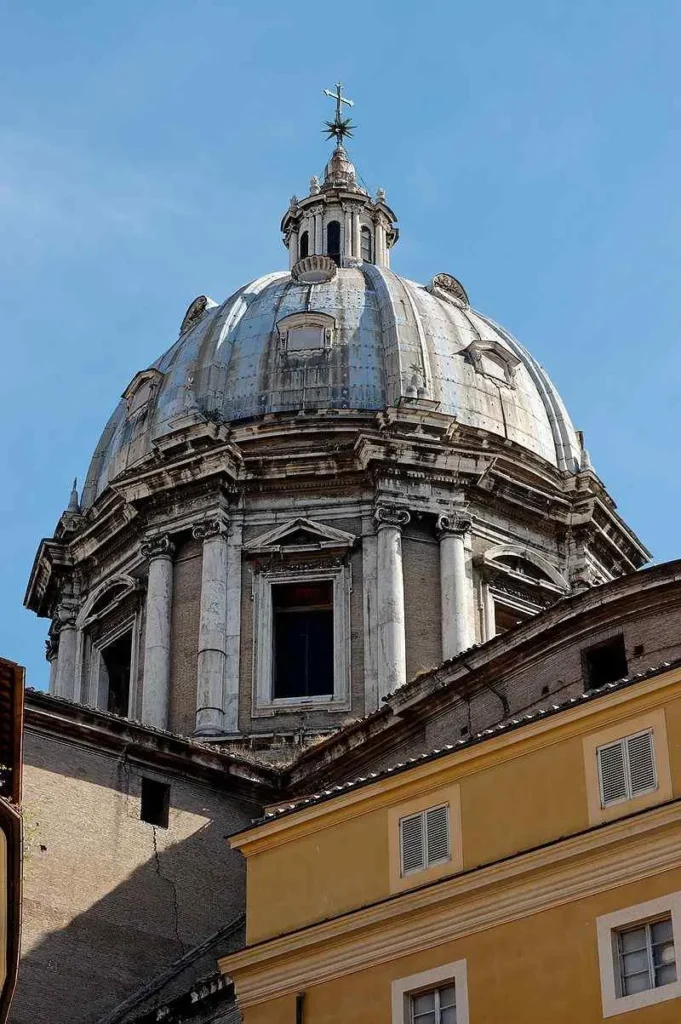
External Description
The Basilica di Sant’Andrea della Valle stands as an architectural masterpiece in the heart of Rome. Its façade, crafted in the late Baroque style, was constructed between 1655 and 1665 by Carlo Rainaldi, who expanded upon the original design by Carlo Maderno. Built from travertine, the façade is grand and imposing, featuring two tiers of paired columns and Corinthian pilasters. The project was funded by Cardinal Francesco Peretti di Montalto, the nephew of the initial financier, Cardinal Alessandro Peretti di Montalto.
At the center, a large window overlooks the portal, flanked by niches housing statues of Saint Gaetano and Saint Sebastian (by Domenico Guidi) and Saint Andrew the Apostle and Saint Andrew Avellino (by Ercole Ferrata). The façade is renowned for its dramatic chiaroscuro effects, created by the bold projection of columns and cornices.
A notable feature is the absence of the traditional connecting volute on the right side, replaced instead by an angel with raised wings, also sculpted by Ercole Ferrata—the same artist behind the angel atop Sant’Angelo Bridge. Above the door, two female statues were crafted by Jacopo Antonio Fancelli.
According to Cesare Brandi in Teoria del Restauro, the façade has suffered “figuratively” due to road widening, which shifted the observer’s fixed point. This change diminished the intended visual impact, flattening the depth and reducing the dramatic interplay of recessed and projecting elements.
In front of the church lies a square named after it, adorned with a fountain originally from the now-demolished Piazza Scossacavalli. This fountain, designed by Carlo Maderno in 1614, was relocated during the redevelopment of Via della Conciliazione.
On the right side of the basilica, between the second and third chapels, stands a simple brick bell gable housing a set of four bells. These bells, cast in different eras, produce notes F3, Bb3, C4, and D4, each housed in a round arch.
Internal Description
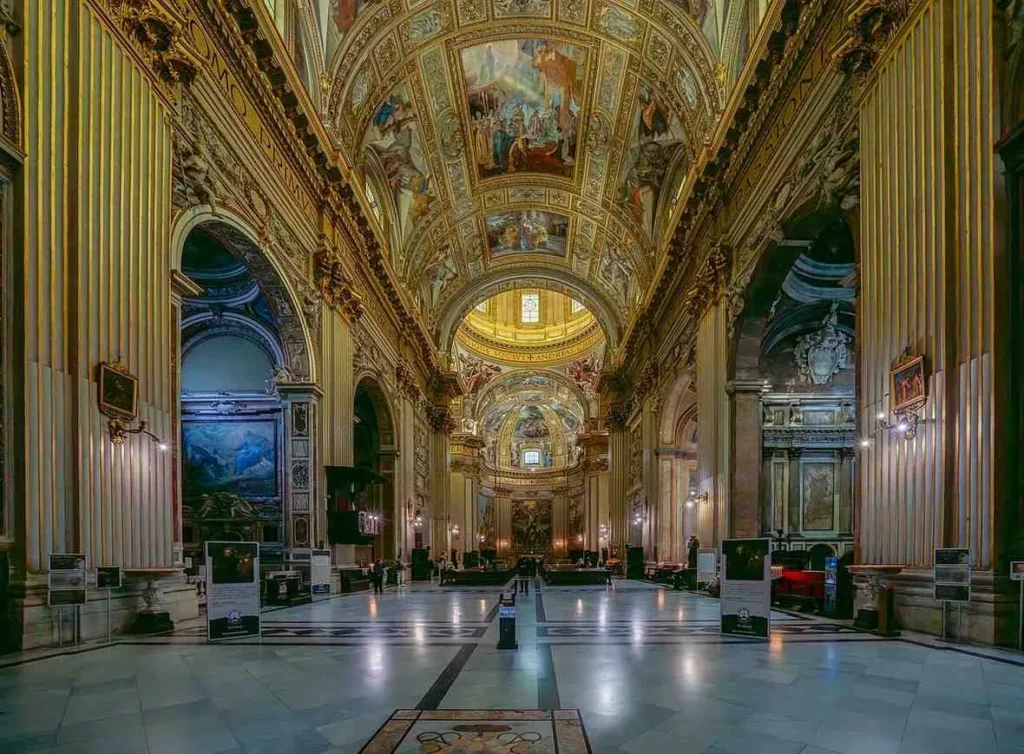
The interior of the basilica follows a Latin cross plan, featuring a large nave with a slightly pronounced transept, flanked by eight side chapels. The barrel-vaulted ceiling is richly frescoed, and the overall layout draws inspiration from the nearby Church of Gesù, though with key differences—most notably, the deeper and taller side chapels, which emphasize the church’s vertical rhythm.
The first chapel on the right, initially funded by the Ginetti and later the Lancellotti families, showcases exquisite sculptures and was designed by Carlo Fontana in 1670. The first chapel on the left, commissioned by Cardinal Maffeo Barberini (later Pope Urban VIII), was created between 1604 and 1616 by Matteo Castelli. It features contributions from renowned artists such as Pietro and Gian Lorenzo Bernini, Cristoforo Stati, Francesco Mochi, and Ambrogio Bonvicino, with an altarpiece by Domenico Passignano (1616).
The third chapel on the left houses a painting of Saint Sebastian, the church’s patron saint, by Giovanni De Vecchi (1614).
In the nave’s final span, you’ll find the facing funerary monuments of Pope Pius II (1475) on the left and Pope Pius III (1503) on the right. These monuments were moved from the rotunda of Sant’Andrea near the ancient Basilica of St. Peter in the Vatican during the 16th century.
The chapel of the left transept, dedicated to Saint Cajetan of Thiene (founder of the Theatine Clerics Regular), features an altarpiece titled The Vision of Saint Cajetan by Mattia De Mare (1730), depicting the saint’s Christmas vision of 1517 at Santa Maria Maggiore in Rome.
The right transept chapel, dedicated to Saint Andrew Avellino, displays the altarpiece Saint Andrew Avellino Struck by Apoplexy by Giovanni Lanfranco (1624). Legend has it that Lanfranco completed the painting in just eight days to mark the saint’s beatification in the same year.
The apse is large and opulently decorated with gold, featuring a triptych frescoed by Mattia Preti: The Crucifixion of Saint Andrew, The Martyrdom of Saint Andrew, and The Burial of Saint Andrew. In the presbytery’s arch, Domenichino painted Saint John the Baptist Pointing Out Christ to the Future Apostles Andrew and John. Additional works by Domenichino include The Calling of the Brothers Peter and Andrew, Saint Andrew Led to Martyrdom, and The Flagellation of Saint Andrew.
In the front chapel to the right of the main altar, the mortal remains of Saint Andrew and Cardinal Giuseppe Maria Tomasi are venerated.
The Dome
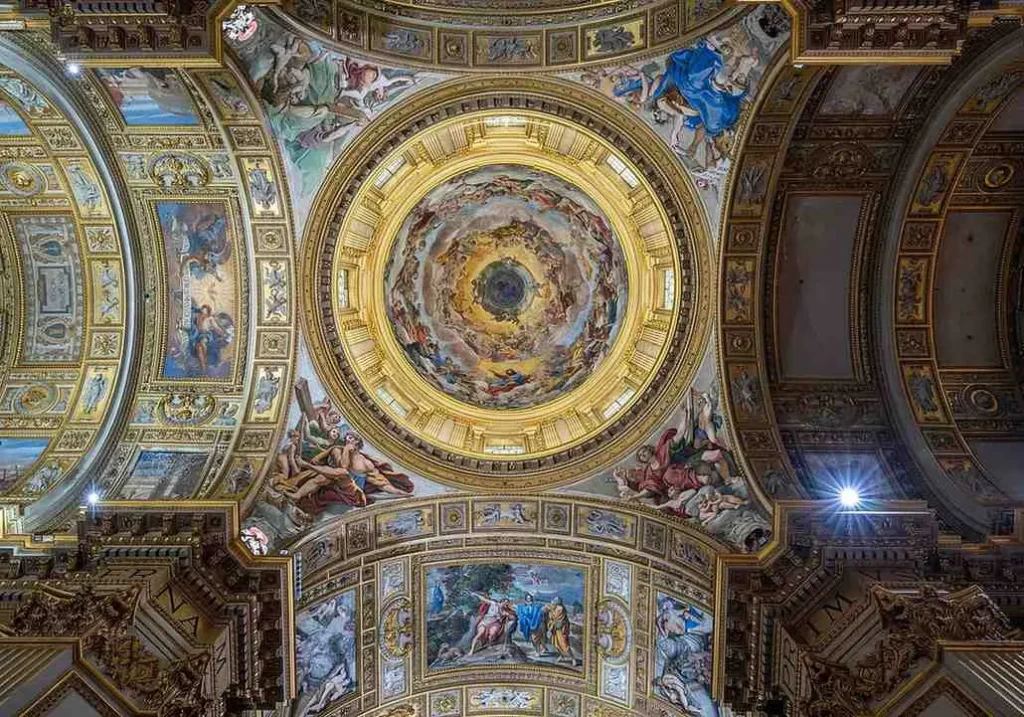
The dome, designed by Carlo Maderno, boasts an internal diameter of 16.61 meters and reaches a height of 71.76 meters, making it the second tallest dome in Rome—after St. Peter’s Basilica and before the dome of the church of Saints Peter and Paul in EUR.
Externally, the drum echoes the twin columns of St. Peter’s Dome, with Rudolf Wittkower noting that Maderno increased the drum’s height, enhancing the window space, thus paving the way for Baroque architectural evolution.
Inside, the dome is illuminated by eight windows interspersed with semi-columns, creating a bright and ethereal atmosphere. The dome’s fresco, The Assumption of the Virgin, painted by Giovanni Lanfranco (1621–1625), is a masterpiece of Baroque art. Inspired by Correggio’s work and later revived by Cigoli, the central figure of the Virgin sits on a throne of clouds surrounded by angels. Giovan Pietro Bellori praised the fresco’s harmonious arrangement, comparing the figures to a celestial melody.
The pendentives feature the Four Evangelists, with additional frescoes by Carlo Cignani on the sides. Notably, a rivalry between Lanfranco and Domenichino (both Carracci School artists) led to dramatic tensions, with Domenichino even accusing Lanfranco of pushing him off a scaffold.
Pipe Organs
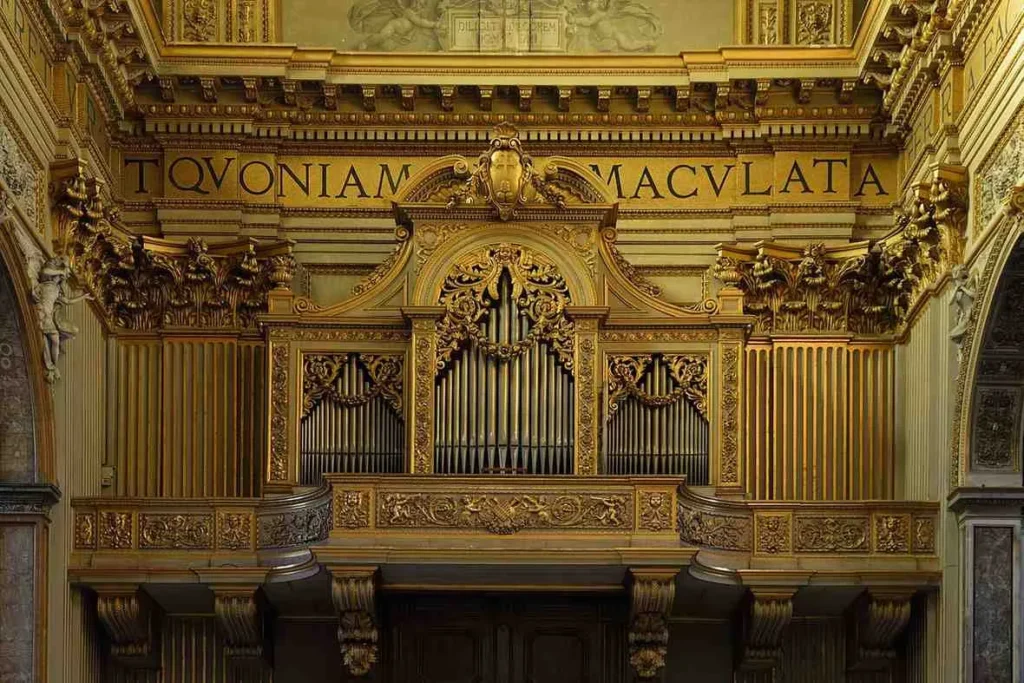
The basilica houses two remarkable pipe organs. The main organ, located in the large choir loft on the counter-façade, was built between 1907 and 1909 by Carlo Vegezzi-Bossi and the Buccolini firm, with restorations in 1964 and 1975. Housed within an ornate neo-baroque case adorned with golden reliefs, the organ features two manuals, a pedal board, and an electrically driven mechanism (originally pneumatic-tubular).
In the apse, there’s a positive organ built in 1990 by the Dutch company Verschueren and installed in 2015. This organ, with mechanical transmission, has six registers on a single manual, adding to the basilica’s rich musical heritage.
Arts
The Basilica di Sant’Andrea della Valle has served as an iconic setting in various artistic works. The first act of the opera Tosca, written by Giuseppe Giacosa and Luigi Illica (based on a story by Victorien Sardou) and set to music by Giacomo Puccini, is set within the basilica. In 1992, the church was featured as the actual backdrop for a television production of Tosca, titled Tosca: In the Places and Times of Tosca, directed by Giuseppe Patroni Griffi.
Additionally, for the 1973 film directed by Luigi Magni, the opening scenes were filmed at Sant’Agnese in Agone instead of Sant’Andrea della Valle. The basilica also appeared in one of the most memorable sequences of the film Risate di Gioia.
Feast Day
Feast Day : 30th November
The feast day of Saint Andrew the Apostle is celebrated on November 30th in the Roman Catholic Church, the Eastern Orthodox Church, and many other Christian denominations.
Church Mass Timing
Monday : 7:00 AM
Tuesday : 7:00 AM
Wednesday : 7:00 AM
Thursday : 7:00 AM
Friday : 7:00 AM
Saturday : 7:00 AM
Sunday : 9:00 AM , 11:00 , 12:00 PM , 7:00 PM
Church Opening Time:
Monday : 8:30 am – 8:00 pm
Tuesday : 8:30 am – 8:00 pm
Wednesday : 8:30 am – 8:00 pm
Thursday : 8:30 am – 8:00 pm
Friday : 8:30 am – 8:00 pm
Saturday : 12:15 pm – 8:00 pm
Sunday : 8:30 am – 8:00 pm
Contact Info
Address:
Basilica of St. Andrew della Valle
Corso Vittorio Emanuele II, 00186 Roma RM, Italy
Phone : +39066861339
Accommodations
Connectivities
Airway
Rome Fiumicino Airport (FCO) to Basilica of St. Andrew della Valle, Roma, Italy distance between 38 min (30.4 km) via A91.
Railway
Roma Termini to Basilica of St. Andrew della Valle, Roma, Italy distance between 15 min (3.2 km) via Via Nazionale.

